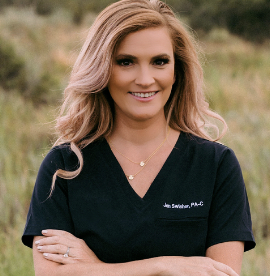Close a Forehead Laceration Like a Plastic Surgeon

The importance of multilayer closure in a laceration repair cannot be overstated, with techniques like buried dermal closure and strategic skin closure options enhancing both functional and aesthetic outcomes. Dr. Justin Cohen made a guest appearance on ERcast, where he joined Dr. Christina Shenvi to discuss his techniques for repairing facial lacerations as a plastic surgeon. He went into great detail about repairing deep forehead lacerations in the emergency department, and here are some of the techniques he discussed.
Close the buried dermal layer with a monofilament absorbable suture (e.g., 4-0 MONOCRYL® [poliglecaprone 25]). Place the suture vertical/perpendicular to the laceration in a deep-to-superficial, superficial-to-deep pattern. The deep dermal layer alleviates tension and should be able to independently keep the wound closed. Dr. Cohen recommends using a bit of travel so as not to throw the stitch at the same level. This can be achieved by going deep, curving the stitch superficially, and grabbing more tissue so the tissue isn’t completely aligned but more oblique. This helps take more tissue to pull the wound together and results in a tighter closure over a larger area.
What if the forehead laceration is deep and exposes the bone?
- Examine the bone for fracture
- Add an additional layer of closure to make this a 3-layer closure
- The deepest layer (often the frontalis or other facial muscles) is closed with 3-0 VICRYL™ (polyglactin 910) to bring the edges of the deepest tissue together
There are three methods of closing the skin of a forehead laceration like a plastic surgeon. Newsflash it isn’t in an interrupted fashion.
Option 1: Running or continuous (“baseball”) stitch using 5-0 non-absorbable suture (e.g., PROLENE® [polypropylene])
⚾ Provides a continuous amount of tension over the entire incision, leading to a better aesthetic result
⚾ Faster and more effective than a simple interrupted technique
Option 2: Running suture with 5-0 fast-absorbing gut
👟 A good option for low-tensile strength lacerations
👟 Consider in pediatrics and/or cases where removal may be a challenge
Option 3: An intracuticular running stitch using 4-0 or 5-0 MONOCRYL®
🪡 Reserved for cases where the skin edges are not damaged
🪡 These sutures are buried under the skin
Olek Remesz (wiki-pl: Orem, commons: Orem), CC BY-SA 2.5, via Wikimedia Commons
If the forehead laceration runs into the scalp, it’s important to avoid getting hair caught in the closure to decrease the risk of infection. Buried hair can cause epidermal inclusion cysts or infection due to naturally colonized bacteria. Consider putting a layer of skin glue over the top of the closure if an absorbable suture was used, as well as a layer of tissue adhesive tape. And just like that, you’re double board-certified in emergency medicine and plastic surgery! Just kidding… if only it were that easy.
Practice-Changing Education
Experience education that goes beyond theory. Explore Hippo Education’s offerings below.


